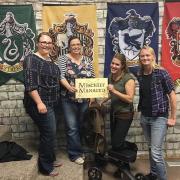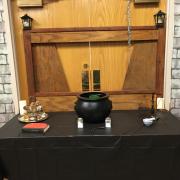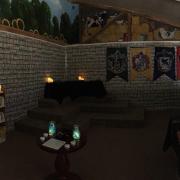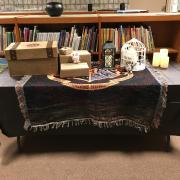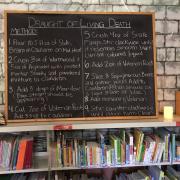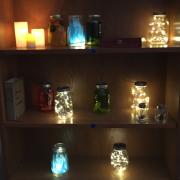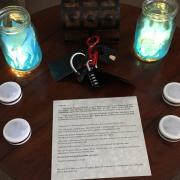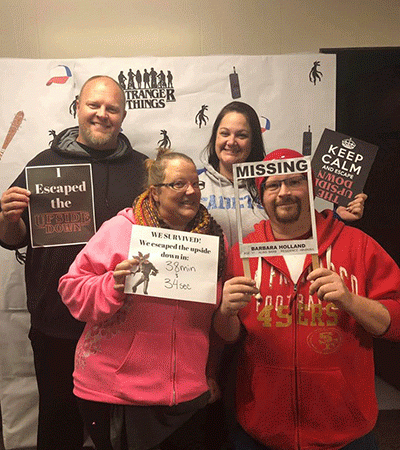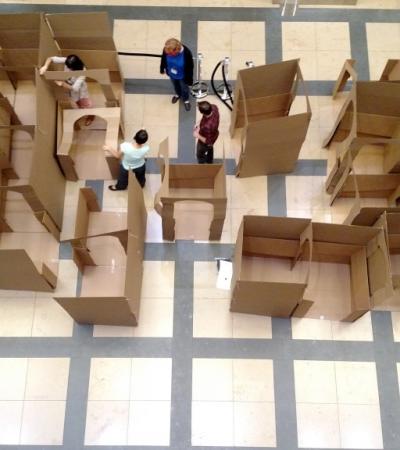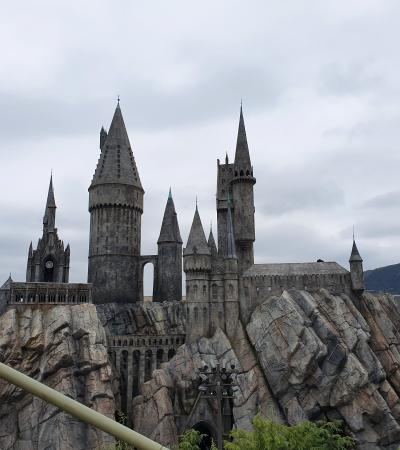Children
Tweens (10-12)
Teens
Young Adult
Adults
Harry Potter Escape Room (No. 2)
$251-500
Roosevelt Library's escape rooms have been a new way for our library to provide fun, educational programming for our patrons, both young and old. They have even drawn people to our little library from neighboring counties and those who normally do not use the library.
Our Harry Potter Escape Room required that participants use multiple senses (sight, hearing, touch and smell) to answer a chain of clues. (See the clue chain under Attachments at right.)
Advanced Planning
We needed three months to plan, create and work out any kinks for our room. There were two of us that were at the core of the brainstorming and creation of the escape room.
We started by choosing a theme. We wanted the Harry Potter theme to also double as a Halloween theme, so we had a dungeon/potions emphasis. From there we started brainstorming our chain of puzzles/clues. We do this by creating a flow chart. It is sometimes helpful to work backward — know your end goal work back to the starting point.
We decided to do a linear chain of clues (one possible way to escape). It is important that your clues are not solely dependent on the participant’s knowledge of the subject matter, i.e. Harry Potter trivia. We had participants unlock three different types of locks to achieve their goal: word, number and key.
We wanted puzzles and clues that would use as many of the senses as possible. We were able to include sight, hearing, touch and smell. We did not include taste because of food sensitivities. We had them hunt through spaghetti, add potion ingredients that caused a chemical reaction, listen for a mysterious ticking noise, and more, all in a very dimly lit room with a flashlight to aid them.
Marketing
We initially posted the event about a month in advance (the beginning of October) on Facebook and included it on our monthly calendar handout. We used Eventbrite to register participants and provided a link on the Facebook event in the ticket info.
Posting on Facebook that early was to our advantage and disadvantage. It gave the event the opportunity to reach a wider audience and it generated a lot of interest, but our event filled up VERY quickly (within 36 hours of the event being posted). Our event had reached over 8.4k people (no boosting involved). Our other events average about 1.4k people reached.
We had so many people on our waitlist that we decided to repeat the escape room in December.
Budgeting
The budget on this event could vary from library to library. It depends on what you already have at your disposal.
Locks and lock boxes will be wise investments for you to make if you are planning on making escape rooms part of your longterm library programming. Amazon has a large variety to choose from, and most of them are reasonably priced (each under $10). These are probably the most expensive part of the essentials of an escape room. (We purchased an antique padlock, a wordlock, a combination lock, and a hasp.)
Decorations and staging are what will blow your budget. We spent about $120 on our dungeon walls backdrop from Oriental Trading. It may seem excessive, but they really helped set the scene and gave the “wow” factor that we were after. We will be able to use them for future events as well.
We already had purchased House Banners from Amazon for previous Harry Potter events. Staff members were willing to bring personal items for decoration and staging. We also had to get creative and crafty for some of our more unique puzzles like our phoenix ash box, our faux trunk that had a false bottom. We used discarded library books to make our own spell books. Pinterest is one of your best resources for helping you find crafty solutions and free printables.
Day-of-event Activity
Set up took about four hours with two staff members setting up. Half of that time was spent putting up the dungeon wall backdrop. If you have a designated community room that you can set up at your leisure and perhaps over a few days, we highly recommend this. We do not have this option in our library.
We set up our escape room in the children’s room, so we had to close the children’s room for two days while we ran the escape room event. We had two staff members inside the escape room with the participants, and we had at least one other staff member out at the front desk checking in participants.
Program Execution
We had 38 sessions over two different weekends: 2 to 9 p.m. Friday and 10 a.m. to 5 p.m. Saturday. Our sessions were scheduled for 40-minute intervals. This allowed 30 minutes for participants to escape and 10 minutes to reset the room. (Make sure you schedule meal breaks for the staff).
We were allowing up to five people per session. (We are working with a pretty tight space so for safety reasons five had to be our maximum.) Of the 190 participants that signed up, we had about 153 people attend (two sessions were no-shows). Eight sessions did not complete the room in time.
When participants arrived, they were taken into our converted children’s room. As a fun handicap, the lights were off, and we had candles and lanterns scattered throughout the room. Each participant was given a “Lumos charm” (a flashlight), and we had them read through a scenario that gave them their goal and the first clue in the chain.
We had two staff members in the room with participants. There was an audio clue, so we needed one person discreetly managing that while the other was there to aid participants. We gave each session three questions that they could use, without penalty, for extra help when they got stuck.
Advice
Know your target demographic. The only negative feedback we got from our participants was that the escape room was harder than they were expecting and that they thought that it was for kids. We had a disclaimer when they registered that the event was for ages 10+ due to the difficulty.
All participants that did not have an adult with them did not finish the escape room. We are thinking that we now need to insist that all minors must have at least one adult present.
We recommend at least one staff member being in the room with the participants. We were there mostly to act as guides if the participants got stuck, but we also guarded our library’s investment. Props and decorations can be expensive or irreplaceable. Your presence will help prevent your participants from abusing props. We have only needed to make backups for our paper clues.
Schedule trial runs of your escape room. These trials can give you very valuable feedback before your event goes public. Your coworkers and their families are excellent people to ask.
Stage your room with many distracting/false clues. This will help set the scene and add to the difficulty of the room.
Supporting Materials
- Feedback (Coming Soon!)
- Programming Librarian Facebook Group

